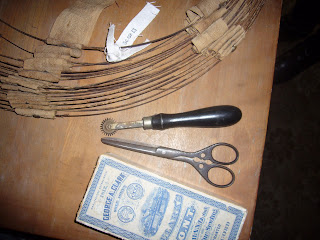During the second wave feminist movement of the 1960's and 70's, working mothers became cultural icons: strong, self-assured and ready to finally break glass ceilings in the workplace. These women were path breakers, but they weren't the first generation of working moms. The reality, of course, is that mothers have always held jobs, rejecting the customary role of the cloistered housewife by choice or necessity.
In late 19th century New York, 97 Orchard Street residents Nathalie Gumpertz and Jennie Levine were among thousands of working moms employed in the city’s garment industry. Their contemporaries also worked as teachers, manufacturers, servants, cooks, clerks, saleswomen, and in many other roles.
Women at work in a laundry circa 1905. Image courtesy the Library of Congress.
In July of 1890, the New York Times reported:
As woman…is now being educated to take a more active part in all branches of employment, and as she has tasted the pleasures of independence...one is forced to conclude that woman’s position in industry is secure and will be permanent. Every occupation, except those calling for too much out-door exposure or too much muscular labor, is open to woman, and if she has not already secured a footing therein the next census will show that she has found a way.
Like their contemporary counterparts, working moms in 19th century New York often struggled to find childcare. Many would drop children off at day nurseries (now more commonly known as day care centers), which were usually connected to larger religious charitable institutions. These nurseries cared for thousands of children, often for little or no cost, but their services came with strings attached in the form of religious and cultural indoctrination that often contradicted the family’s own practices.
A New York woman and her daughters making garters at home in 1908.
Image courtesy the Library of Congress.
In addition to the challenge of finding child care, working women also faced low wages, long hours and major social stigmas. Many chose to conceal the fact they worked, or led others to believe that their work was a hobby rather than a necessity. Piecework—small manufacturing jobs done by hand—allowed women to work at home, giving them the option to keep their money-making endeavors private and eliminating the need for child care. In fact, many children helped their mothers with this work to support the household.
Cultural attitudes about women in the workplace changed rapidly--and dramatically--as the 20th century progressed. According to a 2009 study, women are now the primary earners in two thirds of American families. Mainstream culture no longer stigmatizes mothers for working outside the home, but employment and parenthood continue to pull working women in opposite directions. Despite our advances, Nathalie, Jenny and their contemporaries might find this struggle very familiar!
Happy Mother's Day to all moms--whatever their work may be!
--Posted by Kira Garcia and Marianne De Padua









































